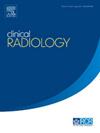复杂腹疝的CT表现:报告指南
IF 1.9
3区 医学
Q2 RADIOLOGY, NUCLEAR MEDICINE & MEDICAL IMAGING
引用次数: 0
摘要
复杂腹疝(CVHs)是很大的切口疝的一个子集,如果没有不可接受的复发风险或潜在的危险并发症,它们不能通过标准的手术技术来减少。它们使患者衰弱,引起疼痛、溃疡和行动不便,由于手术数量的增加、人口老龄化和肥胖水平的增加,它们在世界范围内的发病率正在上升。随着CVH多学科小组会议的发展和世界各地三级疝修复中心的建立,CVH修复领域已成为其自己的外科亚专业。术前计算机断层扫描(CT)已成为CVH修复计划中最重要的方面之一,提供了无法临床评估的信息。这包括缺陷测量,肌肉质量评估,先前疝气修复的证据,以及诸如区域损失计算和直肌缺陷率等指标。总之,这些信息可以与临床检查相结合,以确定最佳的手术过程。不幸的是,有证据表明,当面对CT上的CVH时,放射科医生提供的报告缺少重要指标和报告信息的价值有限。本影像学回顾提供了CVH评估CT报告中应包含的所有特征的综合总结,以及在适当情况下用于生成指标的方法。提供了用于接近CVH修复的外科技术的说明性概述以及网格平面位置命名的最新摘要。本文章由计算机程序翻译,如有差异,请以英文原文为准。
CT of complex ventral hernias: a guide to reporting
Complex ventral hernias (CVHs) represent a subset of incisional hernias so large that they can not be reduced by standard operative techniques without an unacceptable risk of recurrence or potentially dangerous complications. They are debilitating to patients, causing pain, sores and immobility and their incidence is increasing worldwide due to rising operation numbers, an ageing population and increased obesity levels. The field of CVH repair has become its own surgical subspeciality, with the development of CVH multidisciplinary team meetings and tertiary hernia repair centres being established across the world.
Preoperative computed tomography (CT) has become one of the most important aspects of CVH repair planning, providing information which cannot be clinically assessed. This includes defect measurements, muscle quality evaluation, evidence of previous hernia repair, and metrics such as domain loss calculations and the rectus defect ratio. Together, this information can be combined with the clinical examination to determine the best surgical course. Unfortunately, there is evidence that when confronted with a CVH on CT radiologists provide reports missing important metrics and reporting information of limited value.
This imaging review provides a comprehensive summary of all of the features which should be included in a CT report for CVH assessment, together with the methods used to generate metrics, where appropriate.
An illustrative overview of the surgical techniques used to approach CVH repair is provided as well as an up-to-date summary of mesh plane position nomenclature.
求助全文
通过发布文献求助,成功后即可免费获取论文全文。
去求助
来源期刊

Clinical radiology
医学-核医学
CiteScore
4.70
自引率
3.80%
发文量
528
审稿时长
76 days
期刊介绍:
Clinical Radiology is published by Elsevier on behalf of The Royal College of Radiologists. Clinical Radiology is an International Journal bringing you original research, editorials and review articles on all aspects of diagnostic imaging, including:
• Computed tomography
• Magnetic resonance imaging
• Ultrasonography
• Digital radiology
• Interventional radiology
• Radiography
• Nuclear medicine
Papers on radiological protection, quality assurance, audit in radiology and matters relating to radiological training and education are also included. In addition, each issue contains correspondence, book reviews and notices of forthcoming events.
 求助内容:
求助内容: 应助结果提醒方式:
应助结果提醒方式:


